Insights into human-animal relations in Oman at a Camel Beauty Contest
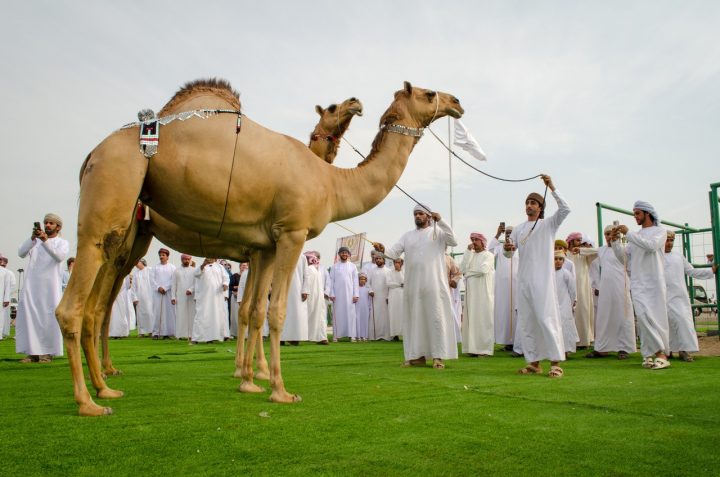
In preparation for our excursion to Oman in February 2025, we had read about the special role of camels within Bedouin culture (Alwahaibi et al. 2023). When travelling in Oman, camels are frequently sighted along the roads, they serve as iconic symbols and appear in souvenir shops in different materials and sizes, and a camel ride is offered as a main attraction when spending a night in the desert. However, an insight into the relations between camel herders and their animals, “how attitudes towards camels are socially constructed, institutionalised, internalized, and culturally transmitted” (Alwahaibi et al. 2023: 2) within Omani society is much harder to get.
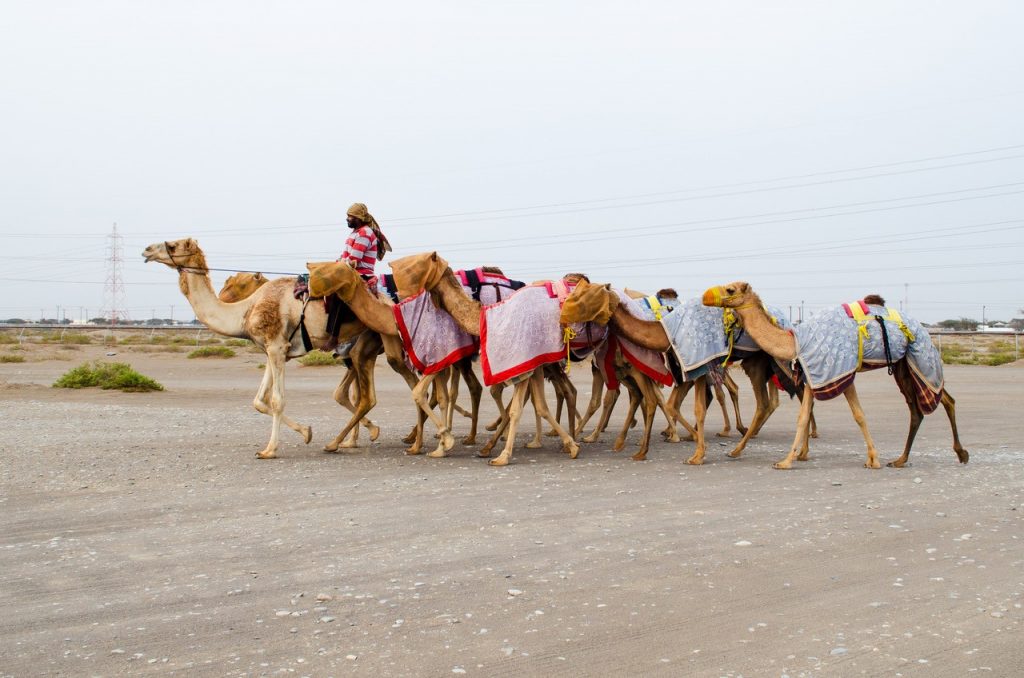
Luckily, we came across a short news article announcing a camel beauty contest during the time of our trip. Such events have become more and more popular on the Arabian Peninsula in the past years, highlighting the close links between camels, status and wealth. At some of the largest events in Saudi Arabia, winners may even receive up to 5 Mio. $. The one scheduled to take place in the Governorate of Al Barka during our trip, however, was much smaller and appeared to be mainly targeted at insiders.
In the days leading up to it we struggled to find exact details on the location and time. After scouring Instagram, WhatsApp groups, and making a few calls, our bus-driver Khalid finally found the location. We came off the main highway connecting Sohar to Muscat, driving into the lowlands towards the mountains. After reaching a dirt road, we followed the tire tracks left in the sand, and started to see groups of camels being led into the distance. The modest outdoor stadium began to emerge, which had a stage for seating and several sections cordoned off by metal fencing.
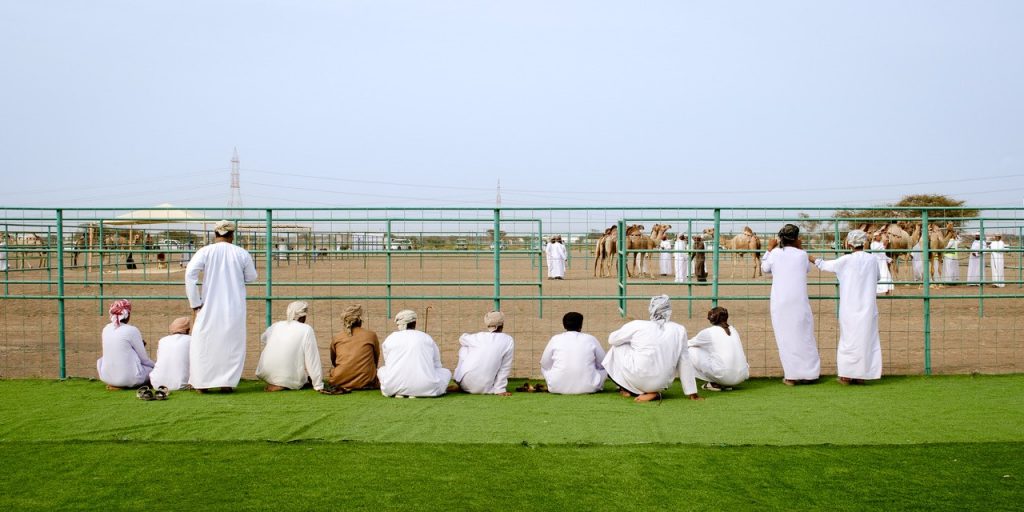
We arrived after the afternoon session was due to start, but they were far from ready to begin. Most of the people showed little interest in our presence beyond mild curiosity, and were far more focused on preparing the camels for the round of judging that was about to begin. All the camels were female, as males are often reserved only for breeding. After a few minutes, one of the organisers invited us down from the seating stage to the pens, and enthusiastically began introducing us to the camels. He went on to describe how the contest worked: The camels are divided into groups, and then judged based on their height, lip shape, eye lashes, hair colour, bone structure, the shape of the hump, and gait. From each of these groups, camels are then selected to go onto the next stage and ranked accordingly. We arrived on the final session of the last day, where a first, second and third place would be decided. Subtle yet detailed ornaments designed with traditional Bedouin style mosaics decorated the camels around their face, neck and hump. In a tent adjacent to the field, local craftsmen and women sold these decorative pieces, while also inviting some of the students to join them for coffee and dates.
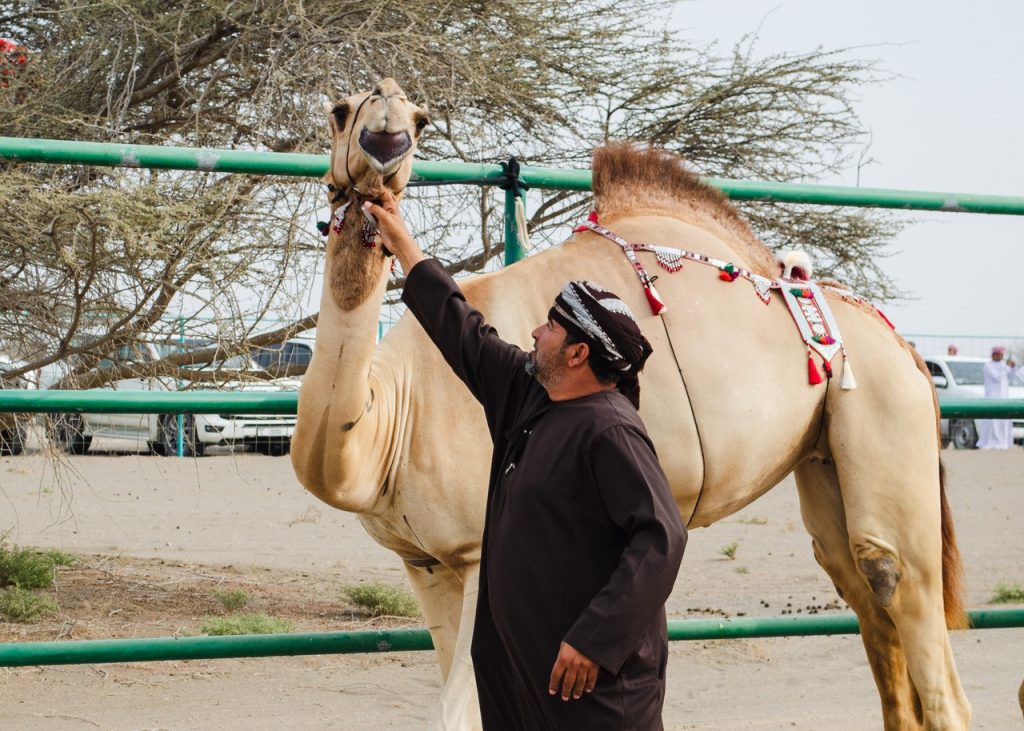
Perhaps the most important role at the event was that of Sa’ad Al Sayadi, who was tasked with determining whether the camels had undergone any cosmetic procedure against the rules of the competition. These included Botox, implants, dye, and anything else that was deemed unnatural enhancements. Any detection of these would result in immediate disqualification and being banned from competing in future contests. Sa’ad patiently walks from camel to camel, closely inspecting them, explaining how he had been doing this for over 10 years and how it was an honour to be given this responsibility. Unfortunately, one was discovered, and Sa’ad promptly reported the anxious owner to the judges, where he was then quietly removed from the event.

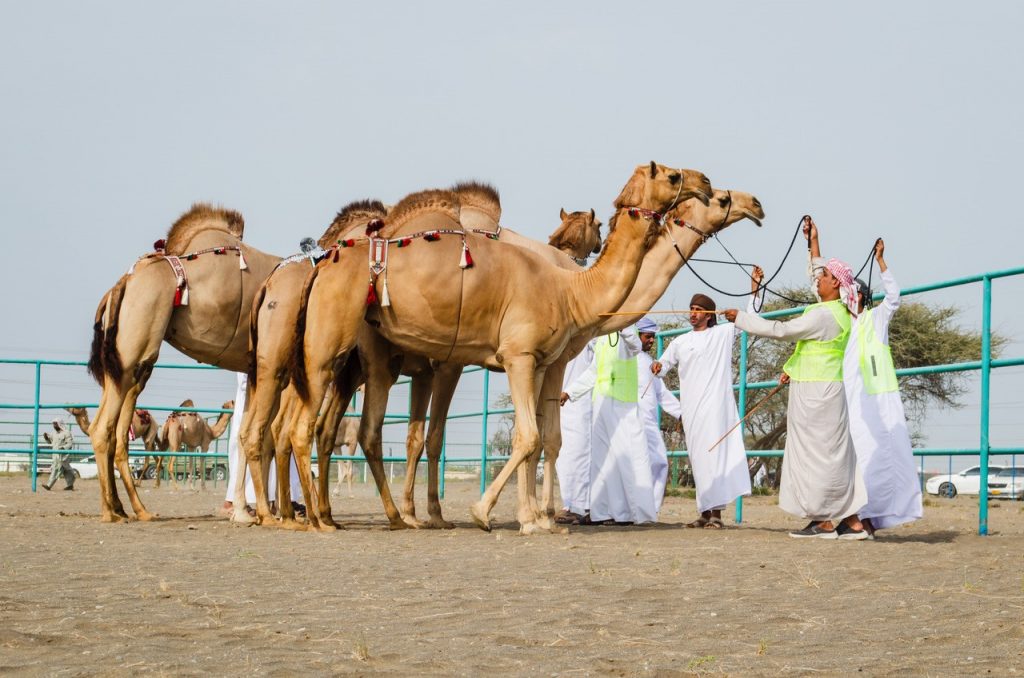
The camels were lined up in front of the judges as they gave them a close look from head to toe. Then, the owners would walk the camels in circles, as the judges carefully watched the way they would stride. After a few rounds, the last set of camels were selected from the groups and brought to the last section at the front of the field. People from the seats spilled into this section wanting to get a closer look at the climax of the event. Many started recording with their phones, undoubtedly for their snapchat and Instagram feeds. Third and second place were announced, including lavish praise for both the camel and her owner, and a banner proudly proclaiming their success was draped over camels. Finally, the MC announced the winning camel, and men rushed to don it with the first-place banner whilst they threw golden yellow saffron water at her and her proud owner.
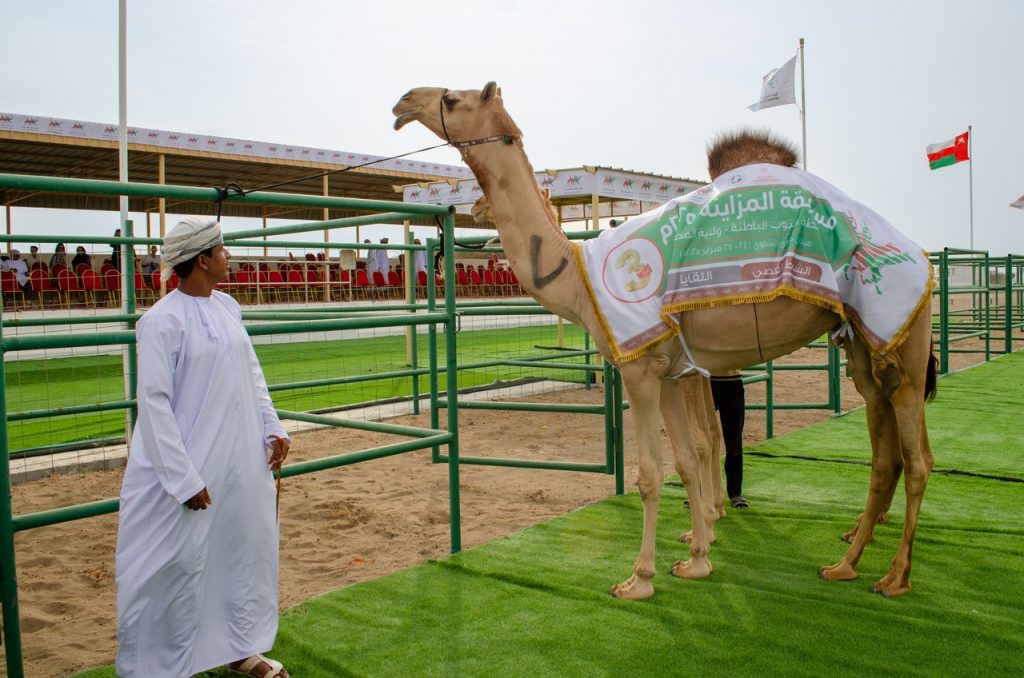
Grateful for such a unique insight, we departed soon after the celebration, driving along the dirt roads back to the busy highway as groups of decorated camels in brightly coloured fabrics continued to gently glide towards the stadium.
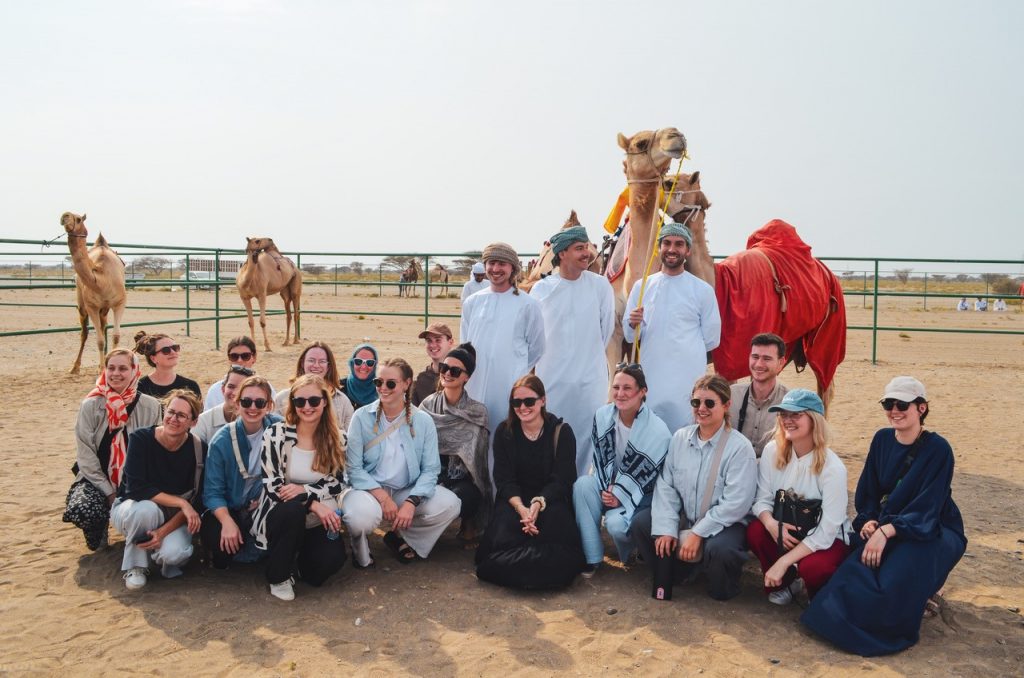
Reference:
Alwahaibi, I., Dauletova, V. & Wels, H. (2023) Camels in the Bedouin Community of Oman: Beyond the Human-Animal Binary, Anthrozoös, 36, 1, 1-14.


